Establishing a Water Sharing Program in Bangladesh: Solving the Largest Mass Poisoning in History
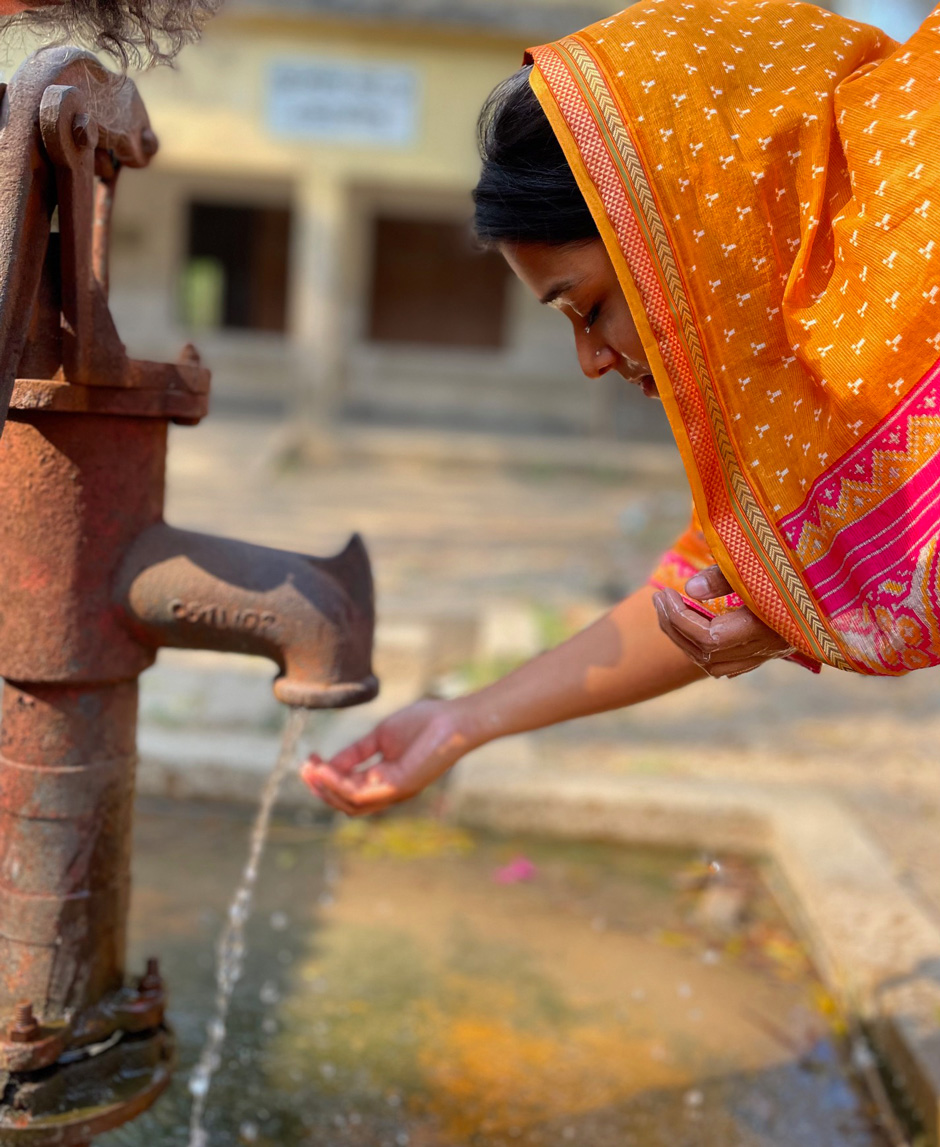 A Chemists Without Borders volunteer, wearing a bright orange scarf, takes a break from her work and washes at one of the many hand-pumped wells in the area. (Credit: Robert Kurkjian)
A Chemists Without Borders volunteer, wearing a bright orange scarf, takes a break from her work and washes at one of the many hand-pumped wells in the area. (Credit: Robert Kurkjian)People in rural communities across the world rely on wells, but not all contain safe drinking water. In Bangladesh, many of their shallow wells are contaminated with the poisonous metalloid, arsenic. Arsenic is tasteless, odorless, and colorless, and has contaminated many wells in SE Asia, particularly in rural Bangladesh. The result, according to the World Health Organization, is the largest mass poisoning in history.
For many years, the government of Bangladesh has been sampling the wells—however, the task is enormous, clean water has not universally been provided, and often awareness of the arsenic problem was not included in the testing/outreach program. In 2018, Robert Kurkjian traveled to Bangladesh as an international consultant and as a Board Member and Technical Advisor for Chemists Without Borders to help sample the wells and develop a solution.
During the 2020 visit, Kurkjian realized that the sampling needed to be updated to be more accurate and the solution needed to include educational initiatives, public investment and community programs built off the data they collect. When Kurkjian returned in 2023, he brought a long-time colleague, Matthew Karanian. As an attorney, policy advisor and Board Member of Environmental Strategies International, Karanian provided policy and survey guidance in the initiative to establish a Water Sharing Program in Bangladesh. Their work was funded by Chemists Without Borders and a matching grant from DoTerra Healing Hands Foundation.
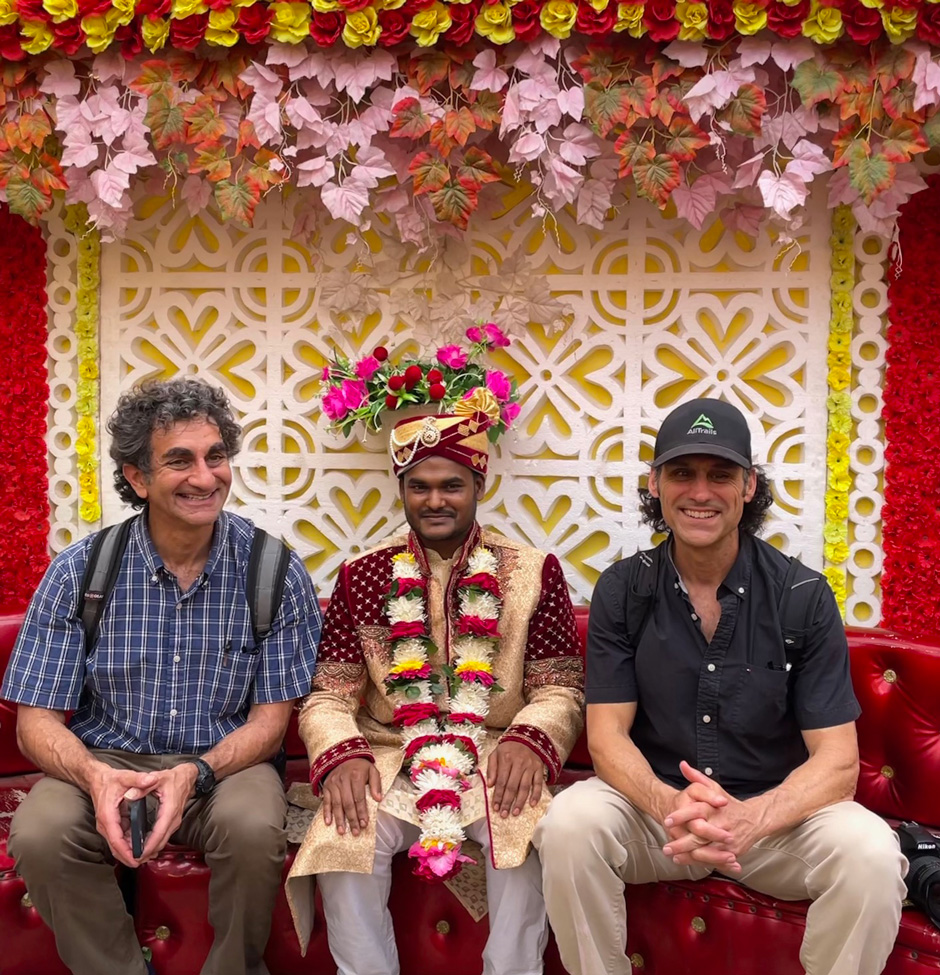
Matthew Karanian (left) and Robert Kurkjian sit beside a man who is celebrating his wedding in the community of Teriail. (Credit: Jasmine Nakahigashi)
Arsenic Contamination in Bangladesh
Private citizens, international agencies and the government of Bangladesh installed millions of shallow tube wells to help provide water to rural areas while avoiding exposure to cholera in the surface water. Arsenic is naturally occurring in the groundwater of Bangladesh, so when these shallow wells were installed, the source water was already contaminated. The water from the hand-pumped wells was unsafe to drink from, and education surrounding the impacts of arsenic was limited.
A large part of Kurkjian and Karanian’s work has been educating the public on the long-term effects of arsenic poisoning. Arsenic is clear, colorless, odorless and tasteless, meaning they had to convince citizens that something they couldn’t see or taste was in the water. Beyond that, they had to convince people that exposure to arsenic could be deadly.
Kurkjian and Karanian both explain that a significant part of educating the public on arsenic poisoning is redefining the idea of what poison is. Poison is often thought to be fast-acting, but arsenic consumed at the levels found in the wells may take years to show an impact. Continued exposure to high concentrations of arsenic can lead to the development of conditions like keratosis or melatosis, as well as have adverse impacts on the cognitive function of children.
Kurkjian explains, “It can take decades for it to manifest itself into either cancer or cardiovascular disease.” He continues, “They’ll say, ‘I’ve been drinking this for 10 years, and nothing’s happened.’ But we don’t really know because the doctors don’t diagnose arsenic poisoning. And if somebody dies of it, they have no idea what they actually died from.”
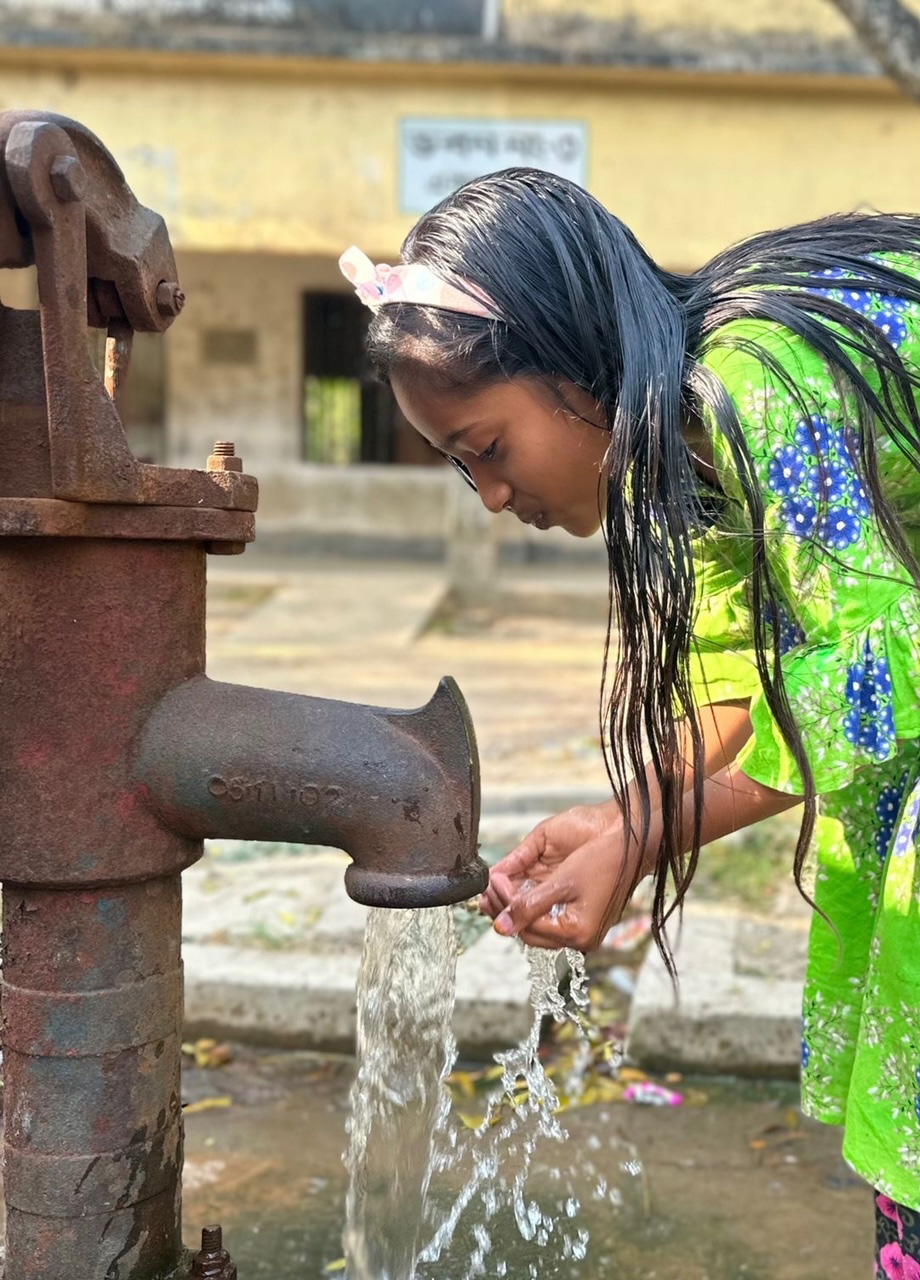
A pupil drinks from the Teriail school well. The well is located in the school’s courtyard and is used by students for drinking and washing. (Credit: Matthew Karanian)
Testing for Arsenic in the Wells
Prior to Chemists Without Borders, the Bangladesh Department of Public Health and Engineering had tested millions of wells, but they faced delays and obstructions as a result of the COVID-19 pandemic. Chemists Without Borders began testing well water in 2018 in a small community, which was then mapped for evaluation.
The group assisted with sampling wells in Teriail, in the Chittagong region. They found that roughly two-thirds of Teriail’s wells exceeded Bangladesh’s safe consumption threshold of 50 parts per billion (ppb). However, even these levels are not necessarily safe if chronically consumed, as arsenic is poisonous even in the lower ppb range to children, according to Kurkjian. Some of the samples revealed wells exceeding 100 ppb, as well as several concentrations of 160 ppb. Data from previous years revealed levels as high as 250 ppb. For comparison, the US Environmental Protection Agency’s drinking water standard for arsenic in drinking water is 10 ppb.
The samples were tested using high-quality arsenic field test kits. Then, using data from the tests, the wells were designated as safe or not. Many of the wells they sampled were located inside homes or community areas. As a result, Kurkjian and Karanian were able to interact with the community every day.
During these interactions, the Chemists Without Borders Team, comprised of local college students, conducted surveys, asking local members of the community about their knowledge surrounding arsenic and their opinions on solutions. These surveys revealed critical information that would help advance the Water Sharing Program that Chemists Without Borders was developing.
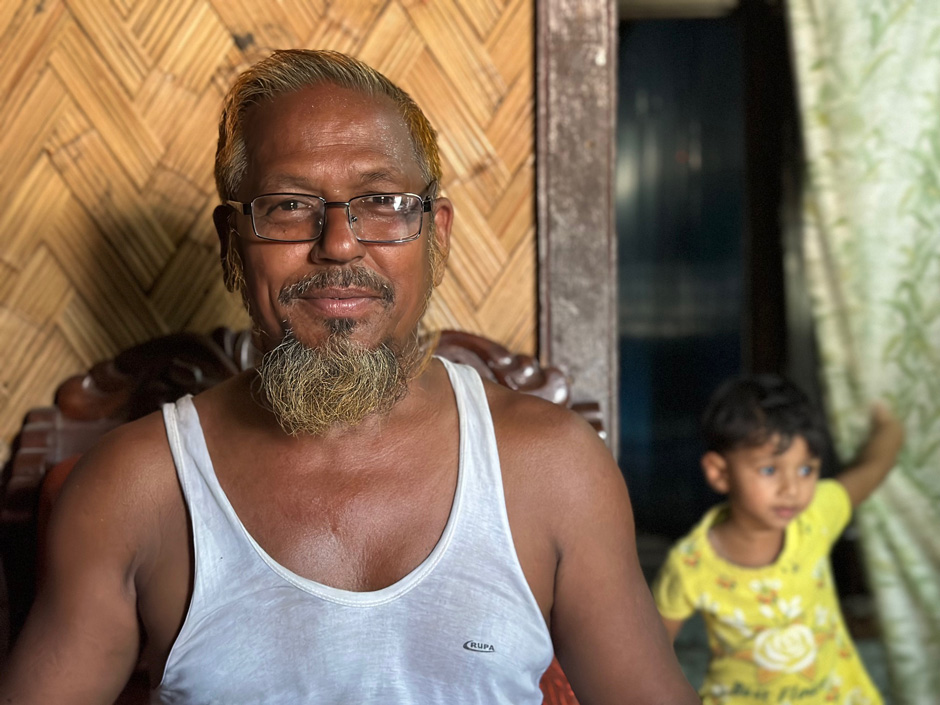
A resident of Teriail is surveyed inside his home by volunteers of the Chemists Without Borders team, during a site visit earlier this year. (Credit: Matthew Karanian)
Water Sharing in Bangladesh
The idea stems from a solution proposed more than 20 years ago by researchers, including members of the faculty at Columbia University. As the name implies, this program relies on households sharing clean water with their neighbors.
Sampling allows scientists like Kurkjian to identify which of the existing wells are safe. From there, the water distribution is in the community’s hands. Investment from the local community will play a major role in the success of the Water Sharing Program, making the surveys Kurkjian and Karanian conducted vital to ensuring the program’s success.
“Because if everybody said, ‘No, we don’t want to share water—this is ours.’ We’re not going to do it then because it wouldn’t work,” Kurkjian elaborates. The surveys revealed that 96 percent of respondents in Teriail would freely share their water with their neighbor if they had clean water and their neighbor’s was contaminated.
Karanian adds, “If we had unlimited resources, if money was no object, we could go and drill a deep water well, for every household in Bangladesh. But that’s not an option. And so this water sharing program that Robert is talking about—that’s the alternative that gets the cleanest, safest water to the most number of people.”
There were limitations to people’s willingness to participate. Kurkjian and Karanian documented, “One of the leading concerns of people receiving the water is that they prefer not to carry the water great distances, and typically not more than 100 meters.”
Fortunately, Bangladesh’s low water use makes water sharing a realistic solution, as citizens would not need to transport high volumes of water. The surveys revealed that the average household only uses about 10-15 liters per household per day. Kurkjian and Karanian note that this is a stark contrast to the United States, wherein residents of California may use as much as 400 liters of water per person per day, including water for irrigation of yards.
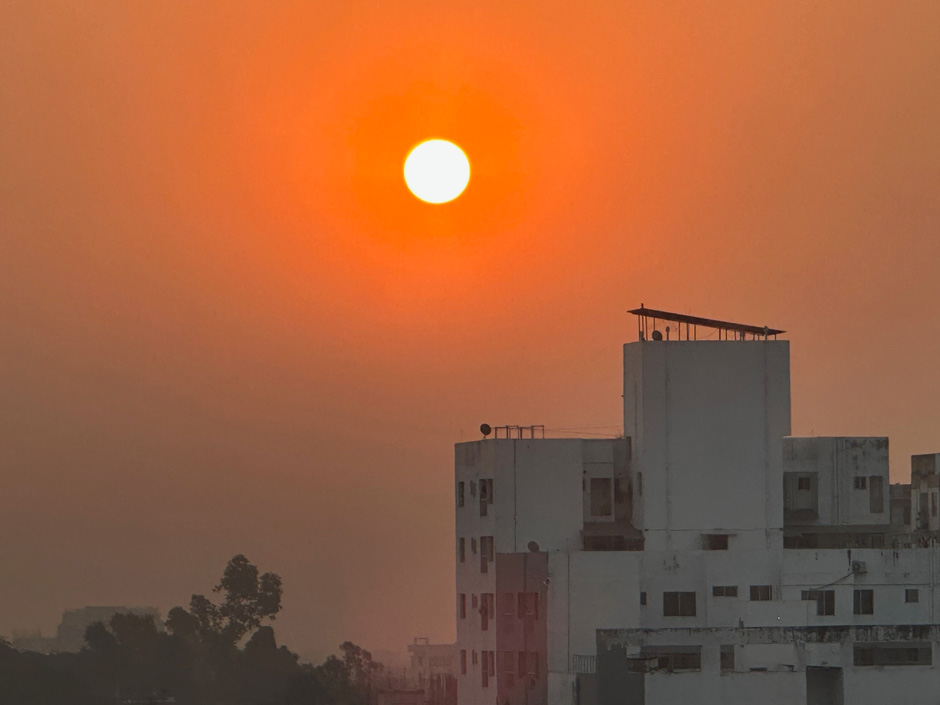
The sun rises over a hazy sky in Dhaka, Bangladesh, during Kurkjian and Karanian’s visit earlier this year. (Credit: Matthew Karanian)
The Role of Public Investment in Infrastructure
Investment from the community is critical to the success of this program. The surveys revealed that people were open to the idea of sharing resources, but Kurkjian and Karanian’s confidence in the program was solidified by the success of the community meetings at the local High School that they began hosting on their 2023 visit.
The presence of young people and women at the town halls was one of the most gratifying parts of the process, as it affirmed that the community wanted to be a part of the solution. “They weren’t eager to leave the classroom—they came up to us asking more questions, making more inquiries, asking how they could continue to work to improve their communities,” states Karanian.
Young people have assisted over the years with the sampling necessary for the project. Kurkjian recalls seeing one young man assisting during the 2023 trip and realizing he had also been helping him during his 2020 trip. Karanian elaborates on the event, “He was a member of that community, a young person who just said ‘I want to help make my community better.’”
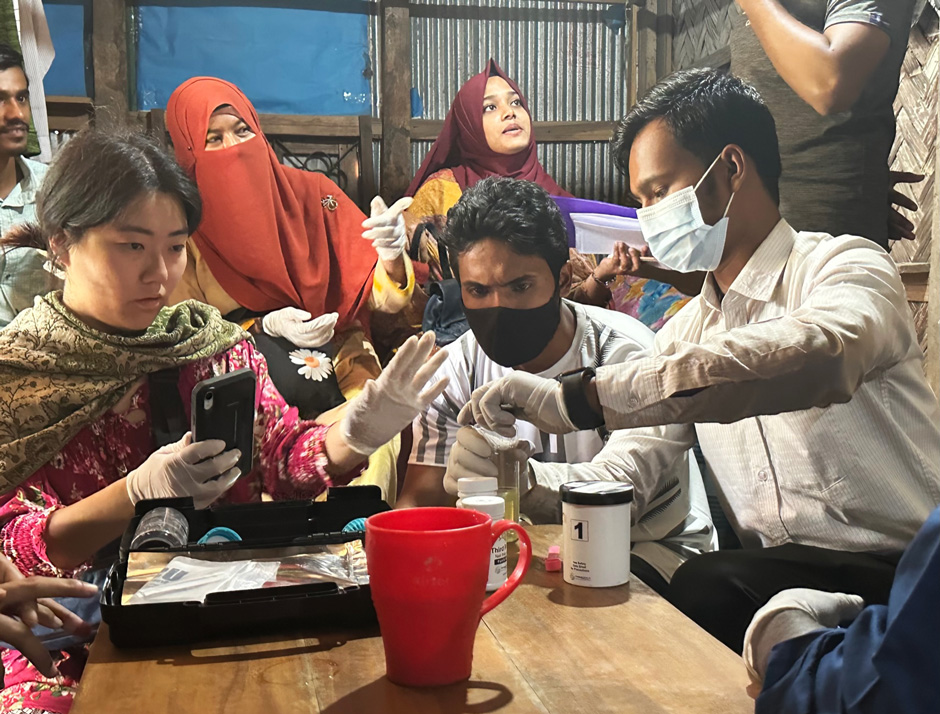
A group of volunteers from Chemists Without Borders testing water samples collected from wells in Teriail, Bangladesh, earlier this year. (Credit: Matthew Karanian)
Conclusion
One of the next steps for the program is to finish sampling and identifying existing safe wells, most of which are deep water (exceeding 100 meters in depth). Next, they will begin testing different areas as potential construction sites for deep water wells. Some of the variabilities they must consider are the location, so it is accessible to locals, and ensuring the source water is safe and plentiful.
Before beginning well installation, hydrogeologists will use electric pumps to evaluate the water supply. They’ll assess the withdrawal rate, output volume, source level losses and then calculate how much can be safely extracted. While placing a well approximately every 100 meters may seem like the most accessible option, geological conditions change, and a well may not always be possible.
They will need to build off of existing public investment in the program to ensure that these new wells are utilized and remain free for people to use. Kurkjian explains that in some cases, government wells that had been installed ended up with people building fences around them so that they became inaccessible to all of the public. So before building the wells, Kurkjian and his team will work with the public to develop a framework for water sharing. Past failures of NGOs providing safe water include overlooking the nuances and complexities of rural communities. CWB emphasizes arsenic education and then allows communities to develop their own system for water sharing based on kinship, social relations and cultural practices.
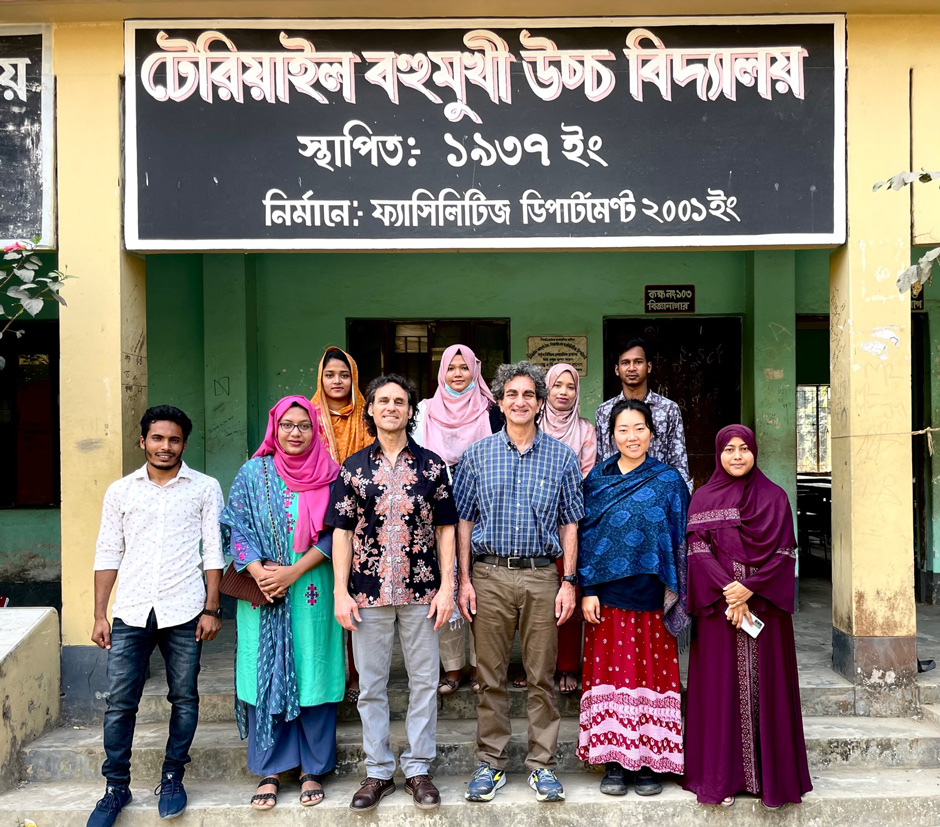
The Chemists Without Borders team pauses for a group photograph at Teriail High School in Bangladesh, during their work on the water sharing program. Robert Kurkjian (front row center, with floral shirt) is standing beside Matthew Karanian (blue shirt). Jasmine Nakahigashi, an intern with Chemists Without Borders (blue shawl) and Shahena Begum, project coordinator for Chemists Without Borders (purple burka), are standing in the front row, far right. (Credit: Chemists Without Borders)
Kurkjian and Karanian also must consider how the changing climate will impact future conditions in Bangladesh. Climate change leads to the two extremes of flooding and drought—both of which can be detrimental to the water supply.
In rural parts of Bangladesh, there is insufficient sanitation infrastructure, which results in people defecating outside or in pit latrines as alternative options. If flooding occurs, waste can be carried to the wells, contaminating them with a host of bacteria and viruses that make previously clean water unsafe. On the other side of the extremes, long periods of drought lead to the reduction of groundwater levels, leaving less water and potentially higher concentrations of arsenic.
Understanding all of the compounding variables and the importance of civic engagement are necessary for ensuring the Water Sharing Program is successful. Over the past few years, they’ve learned a great deal about the community, their behaviors and the ways in which they will respond to improved access to clean water.
Kurkjian and Karanian are hopeful that they will be able to refine the program through their work in Bangladesh. If successful, the program could work in other parts of the world that are facing difficulties accessing clean water. Kurkjian explains. “The idea is to develop a model that can be replicated throughout the country and elsewhere in the world. That’s the ultimate goal.”
For more information, email: robert@environmentalstrategies.org
Or visit: chemistswithoutborders.org
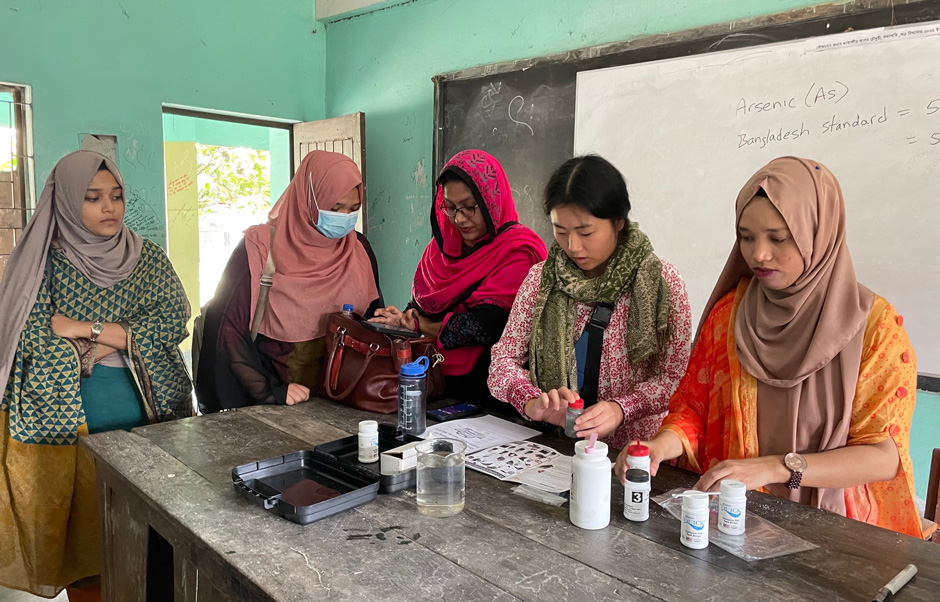
Volunteers from Chemists Without Borders during a training session at Teriail High School in Bangladesh. The volunteers conducted surveys of local residents, participated in focus groups of the local community, and tested wells for arsenic. (Credit: Robert Kurkjian)




Robert
June 17, 2023 at 10:37 am
Thank you to Samantha for preparing this article on our work at Chemists without Borders. In southern CA, residents use an average of about 400 liters/person/day. 60% is wasted on irrigating lawns. In Bangladesh villages, they use less than 5 L/p/d.